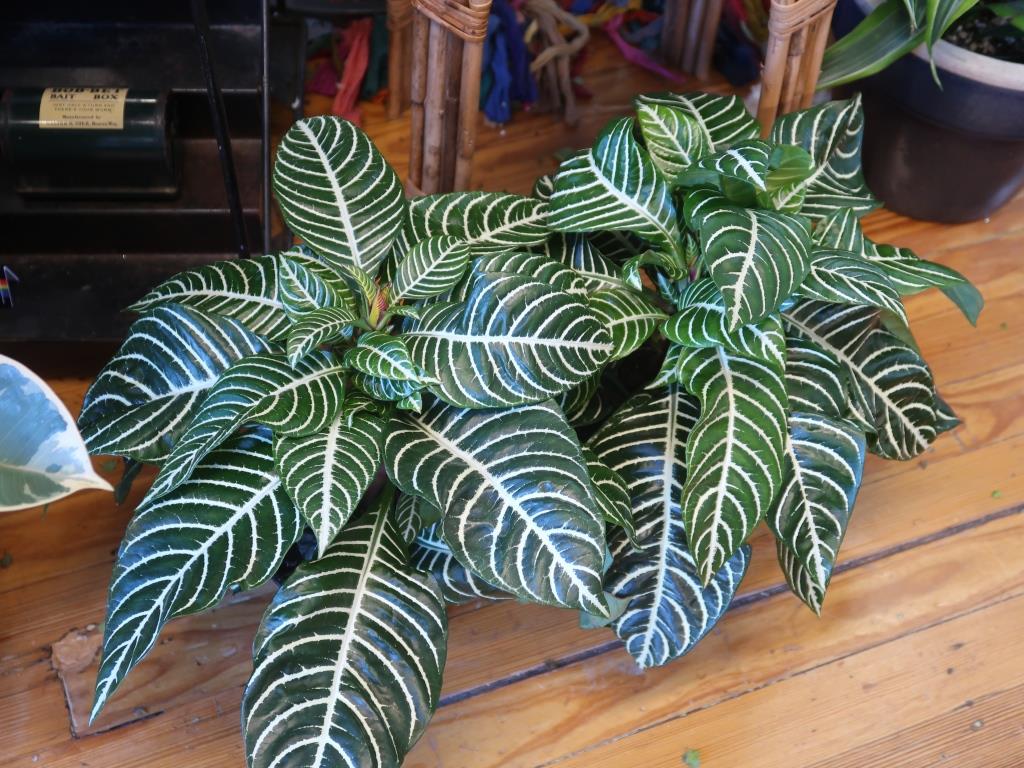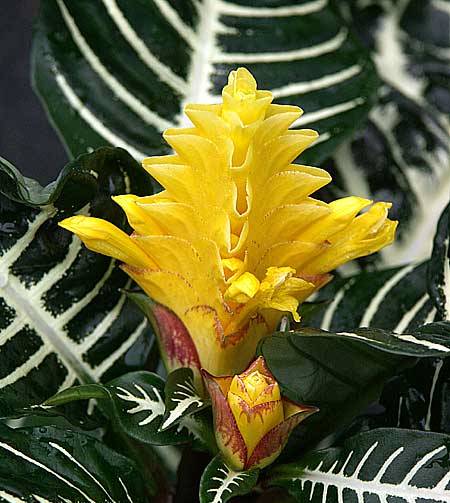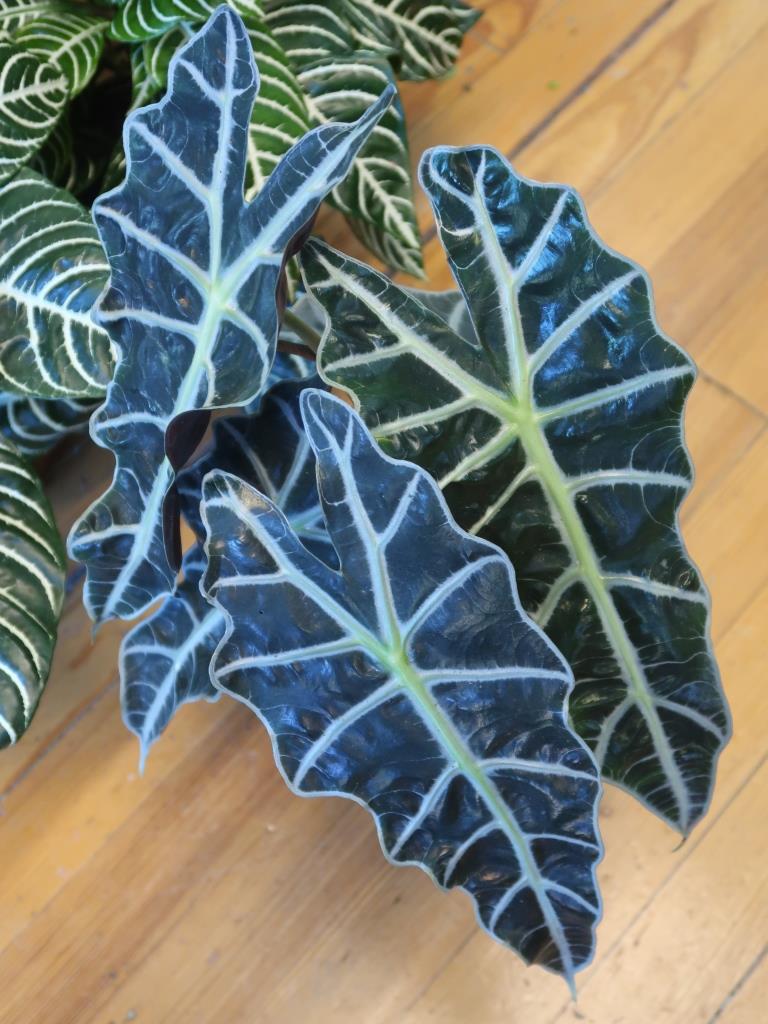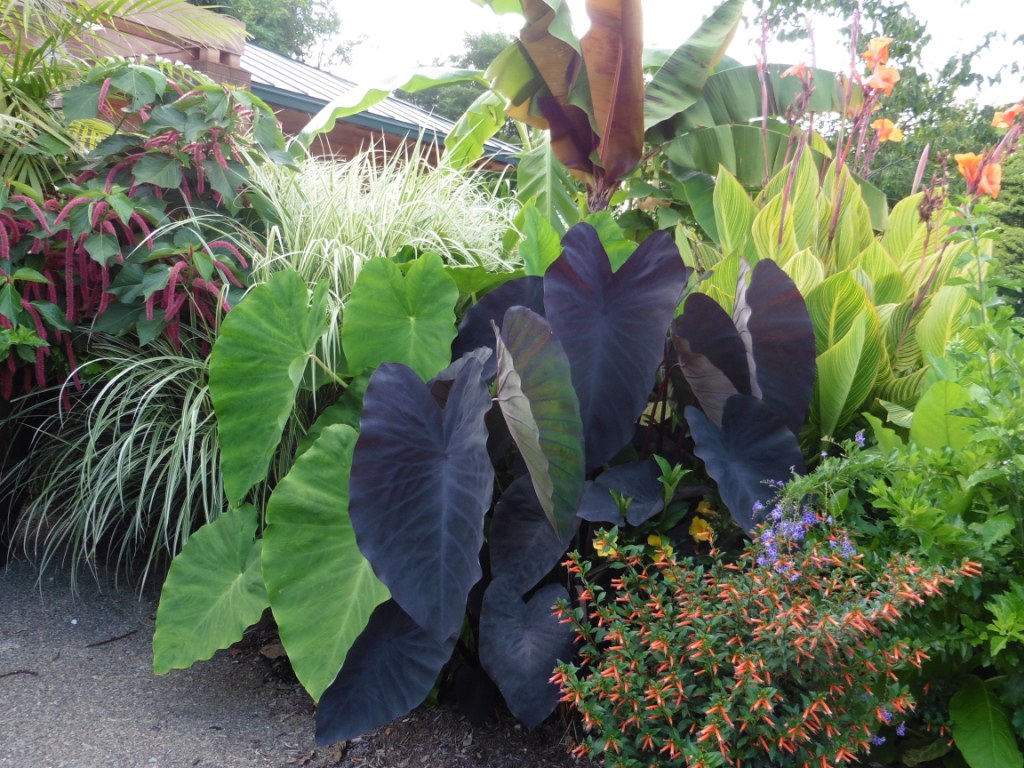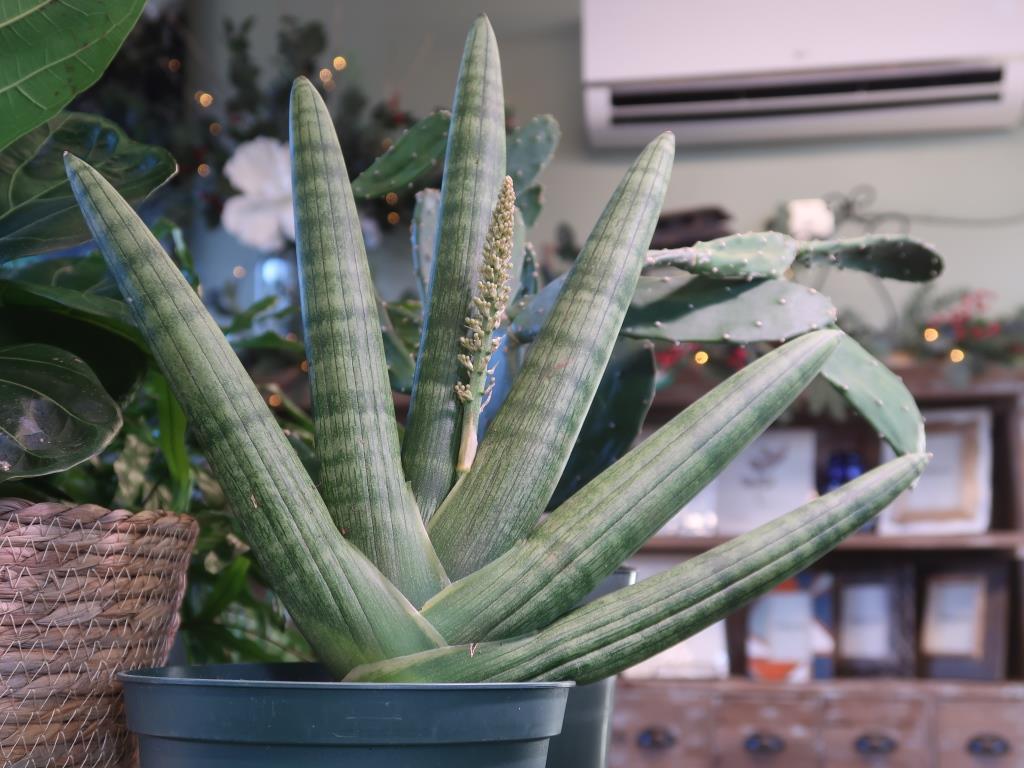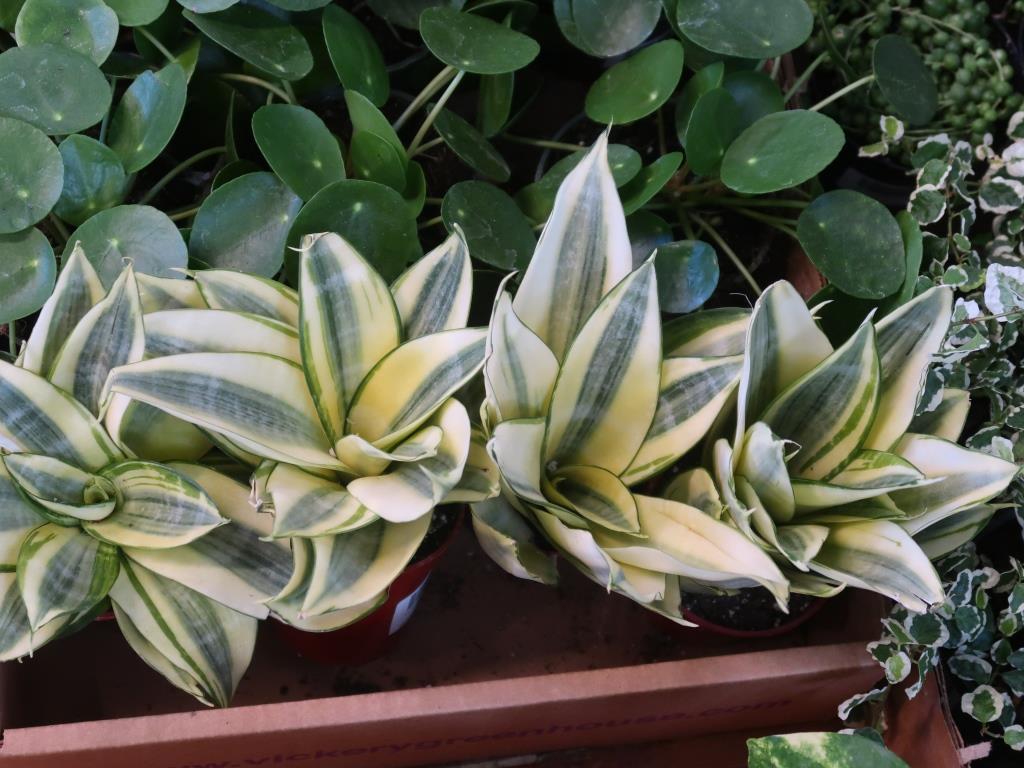I am writing a story on houseplants for next week's paper, so these are some of the pictures I took. I thought I would use them as mystery plants.
Zebra plant -Aphelandra squarrosa is a beautiful, but temperamental houseplant. It likes temperatures above 60 and high humidity—indoor conditions can be quite dry with winter heat. Consider a spot in a bathroom or kitchen. Keep the plant in bright light (but not direct sunlight) and its soil consistently moist—but not too wet.. The bold dark green leaves striped with white veins is pretty in its own right, but the showstopper to this plant is its bright yellow flowers,
which usually happens in late summer or early autumn. Probably not a good plant for a beginner gardener, but worth the challenge.
Alocasia Polly, or African Mask Plant
is actually in the group of upright elephant ears. Elephant ears are a common name given to foliage plants in the Colocasia, Alocasia and Xanthosoma genera.
This particular alocasia is often used as a houseplant, but I have seen gardeners growing it outdoors in the shade during the summer. I would not take a chance on this one surviving outdoors in the winter. Inside give it bright yet Indirect light
Sanseveria cylindrica ‘Boncel’– Starfish sanseveria.
This is a more compact variety of the African spear plant, and they are all related to the Snake plant or Mother-in-laws tongue sanseveria with thick, flat foliage.
I love sanseveria, but had never seen this one before. Sanseveria are tough houseplants and can survive in dry conditions with low light or bright indirect light. The only thing they don’t like is too much water. You can see this one has a flower spike coming up. Sanseveria can bloom indoor with perfect conditions. The flowers, while showy, can be a bit cloyingly sweet in fragrance.

